I’m meant to be finishing my book for a deadline next week, but I can’t stop thinking about Sicily. Specifically, Etna: the magnificent force that she is, the wildness all around her, the tumultuous winds on her altitudes, and above all, the incredible devotion that producers all around the volcano’s base show to their vineyards and their craft.
Etna, her vineyards and her wines, will quite literally take your breath away: standing on the terraced slopes where Nerello Mascalese grows amongst its blending partners, the powerful Sirocco wind from the African continent seems to grasp at your throat, and the powerful scent of the yellow flowering ginestra takes up space in your sinuses. What is there to say before vines so graceful, so mature, so knowing, who can withstand these unruly airs along with ash? The wines, as well, cause you to clam up. There is little one can rightfully say, when a wine speaks louder than you, when it defies translation.
If we step back in time only sixty years, Etna had just emerged as an officially classified DOC region—but it was still making mostly bulk wine. It’s fairly recent, in the past thirty years, that we have begun to see terroir-driven Etna wines. This is thanks to people like Frank Cornelissen (whose vineyard is pictured above), Andrea Franchetti, Salvo Foti, and Anna Martens and Eric Nairoo.
Contadini of London
Anna Martens, namesake of Vino di Anna, is an Italy-winemaking veteran who, along with her partner, Eric Nairoo (of Cave de Pyrene), has been going back and forth between the volcano and London since 2008. London and Etna seem two unlikely bases until you witness Anna walking through the scrub of wildflowers and weeds that grow all through one of the high elevation vineyards they farm—and then you see that she is worldly, but belongs on the mountain.
I’ve liked the Vino di Anna wines ever since I sold them from a little shop in Brooklyn ten years ago; it turns out, the “Palmento Rosso,” made in the traditional contadino1 stone structure for fermenting, still has a grip on me. I realized there is a reason I hadn’t tried many of the other cuvees—they are mostly single-vineyard and rather limited.
Below is the incredible map of Etna by Xiaowen Huang which is custom made for each producer, emphasizing their contrade2.
Vino di Anna encapsulates the delicate balance between traditional knowledge and modern care demanded by viticulture on the volcano. The project is an ongoing exploration of the potentials of Etna terroir, ranging from the rehabilitation and limited use of an old palmento; to the propagation and replanting of old vines featuring the native grapes of Etna (Nerello Mascalese, Nerello Capuccio, Cariccante, Grecanico, and others); to the installation of Georgian qvevri. They ferment wines in every material imaginable, including one wine made entirely in glass (the Vigna di Pirao, which I actually mentioned in a previous newsletter). It’s a fascinating endeavor that reveals how the volcano can lure you into its charms and complexities, promising a lifetime of investigation (along with very delicious wines).
A notable update from Vino di Anna is that they have planted Nerello Mascalese and Grecanico in the esteemed Rampante contrada, which is quite high in elevation. I learned that only since 2007 is this site ripening properly, as that’s the year when temperatures started noticeably increasing on Etna. This was only one of many instances when climate change was mentioned during my producer visits in Sicily, as well as in Central Italy. The weather is changing so quickly, I wonder how producers will keep up when vines need at least 5 years to mature?
The Garden of Etna
Romain Coleringer is a Parisian whose obsession with Alain Castex and Sicilian heritage led him and his family to the slopes of Etna. He was fortunate to take over a generous plot of land that was farmed in the famed contadino style: old, gnarled vines crawl along the earth, nearly hidden beneath the lawn of red clover, flanked on all sides by every kind of Mediterranean fruit tree imaginable: walnuts, peaches, chestnuts, mulberries, olives.
From this little vine-garden, and a few other vineyards, Romain and his wife Ginger make vibrant contadino wines that breathe the spirit of Etna under their label Giardini ColeRinger. We tried a rustic, tannic, golden-hued wine made of Grecanico Dorato—the name (which means golden) befitting the color. Grenanico is apparently the same variety as Garganega, found in Soave—the first of many times that we had to stretch our brains to connect history to the present-day, counting backwards invasion to invasion to try to track which ruler might have spread a grape in two locations (the guess, usually, landed on Napolean).
While there are a handful of exciting low-intervention producers around Etna, it’s notable that Romain does not add sulfites to his wines, a rarity. He also organizes an annual wine fair on Etna, called Solo Uva—only grape—celebrating zero-zero winemaking.
Less Arrogante, More Carricante
On the other side of Etna is a very special town called Milo, which is known for a few things: Being nestled just between the volcano and the sea, with gorgeous views of both depending on your vantage point; and the white grape Carricante, of which I had virtually no understanding until an extremely enlightening tasting with Simone Foti of I Vigneri.
The I Vigneri name carries weight around Sicily and throughout Italy because of the papà: Salvo Foti. Known as the “godfather” of Sicilian wine, Foti senior worked as a consultant for various wineries in the 1980s and went on to found I Vigneri in 1999 as a “consortium” of winegrowers around Etna. Foti is incredibly studious; his brand and cuvee names are littered with references to medieval texts about wine which he would have read in the original Latin—something I found so interesting when he told me, at the visit, that he didn’t even speak Italian until he went to school at six-years-old (he spoke Sicilian, of course, at home). His son, Simone, now speaks French, Italian, Sicilian, and English, and runs things at the estate along with his brother Andrea, who we didn’t get to meet.
Their winery is absolutely astonishing. They’ve restored a massive, old palmento which they use for one red wine; the rest of the year the fermenting platform is where they host tastings. From there, you move into their underground cellar where everything is custom, state-of-the-art, architectural. We saw their new set up for making Champagne-method sparkling wine (which I didn’t get to try, but I love having a reason to return someplace—and I have no doubt I’ll be back in Sicily soon).
The Fotis are in a unique area on Etna. Milo is the only place where Etna Bianco Superiore DOC wines, based on Carricante, are produced. At first, I didn’t get it—what’s so special about Carricante? But then Simone mentioned that he sees it as a “neutral” grape and it clicked—this is a variety that transmits terroir, like Chardonnay. It’s not about the variety itself, but rather about the way it puts a microphone to the soil.
Interestingly, the wine from the Foti estate that most impressed me was not one we tasted that day—it was a wine we had at the gorgeous restaurant Materia Spazio Cucina, in Catania (worth a trip to the city just to visit this restaurant, the cooking is extraordinary and wine list pretty excellent). We had the “Primavera” wine that the Fotis make from one of the experimental plots they cultivate in conjunction with a Sicilian university. Primavera is an electric, seductive blend of Pinot Bianco, Savagnin, Chenin Bianco, Gewurztraminer, and Carricante. If you have the chance to try one of the 1200 bottles made, don’t miss it.
The “less arrogante, more Carricante” slogan came up because I suggested that Simone make a “Carricante” t-shirt and he told me he already has one!
Postscript
I should mention: The Sicily trip was a microtour I created for two guests who came on the Central Italy tour, which was a week-long immersion in natural wine and Italian culture. In the future, I’d love to offer tours in Sicily, too. The natural wine scene there is fascinating and growing.
I have written first about Sicily (this is Part I of II) because it’s fresher on my mind, but I will absolutely torture you with some of the exceptionally beautiful highlights from the Central Italy trip in due time.
Getting the “post too long for email” message so… to be cont. Un abbraccio!
Rachel
“Contadino” is a word that refers to an old-school farmer in Italy, someone who worked the land for their own subsistence, i.e. a peasant.
A “contrada” in Sicily is, like a “cru” in Burgundy, a specific vineyard plot demarcated by its soil; on Etna this would be tied to volcanic activity and lava deposits. Plural: contrade.




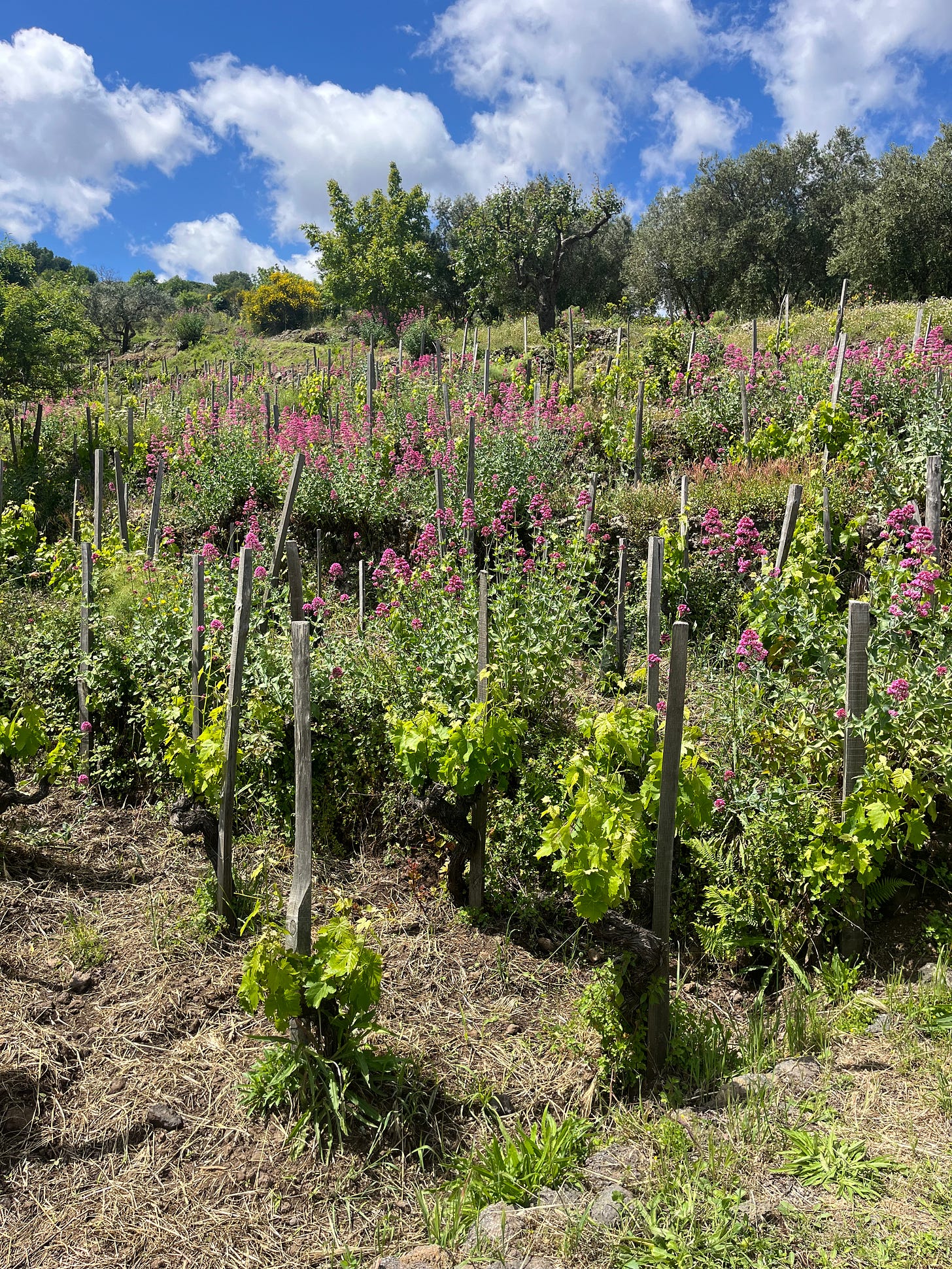
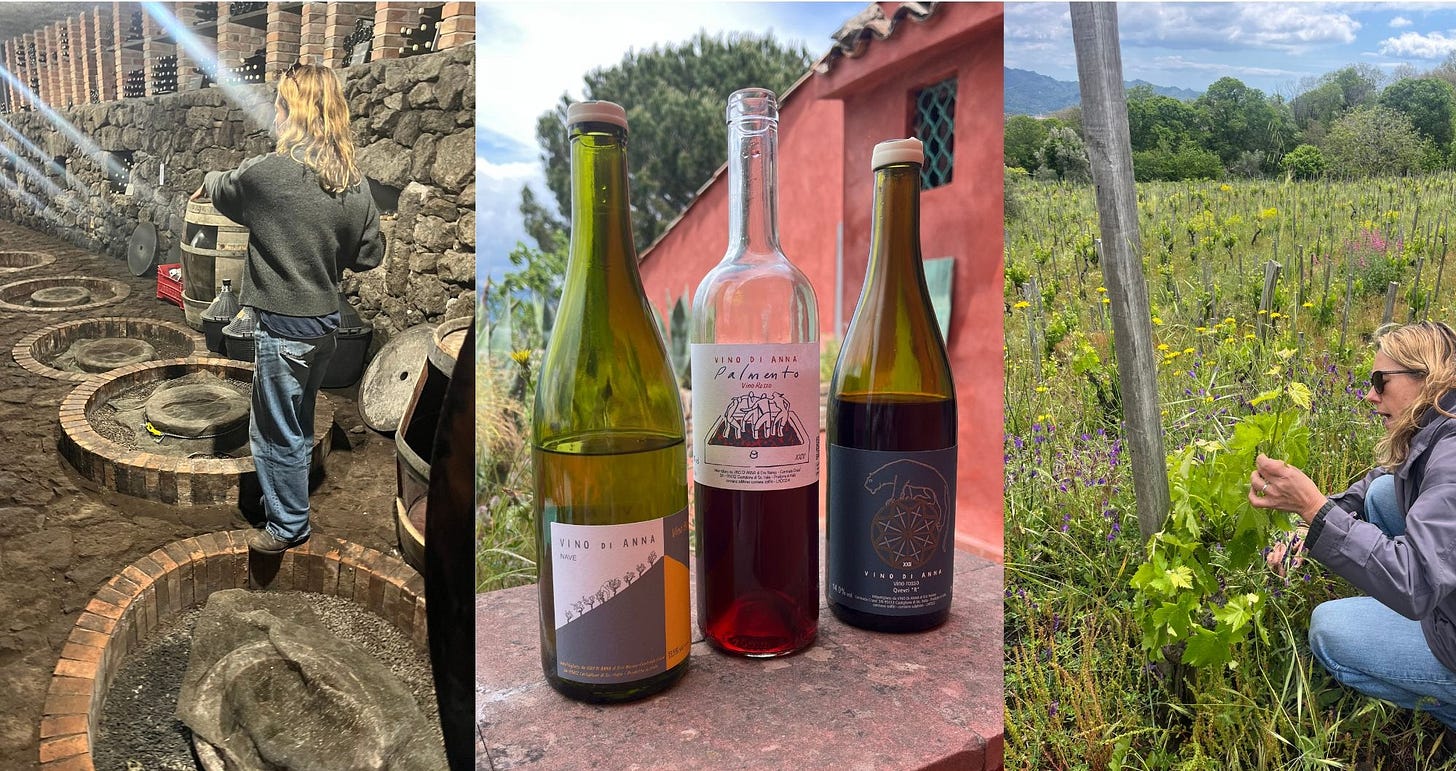
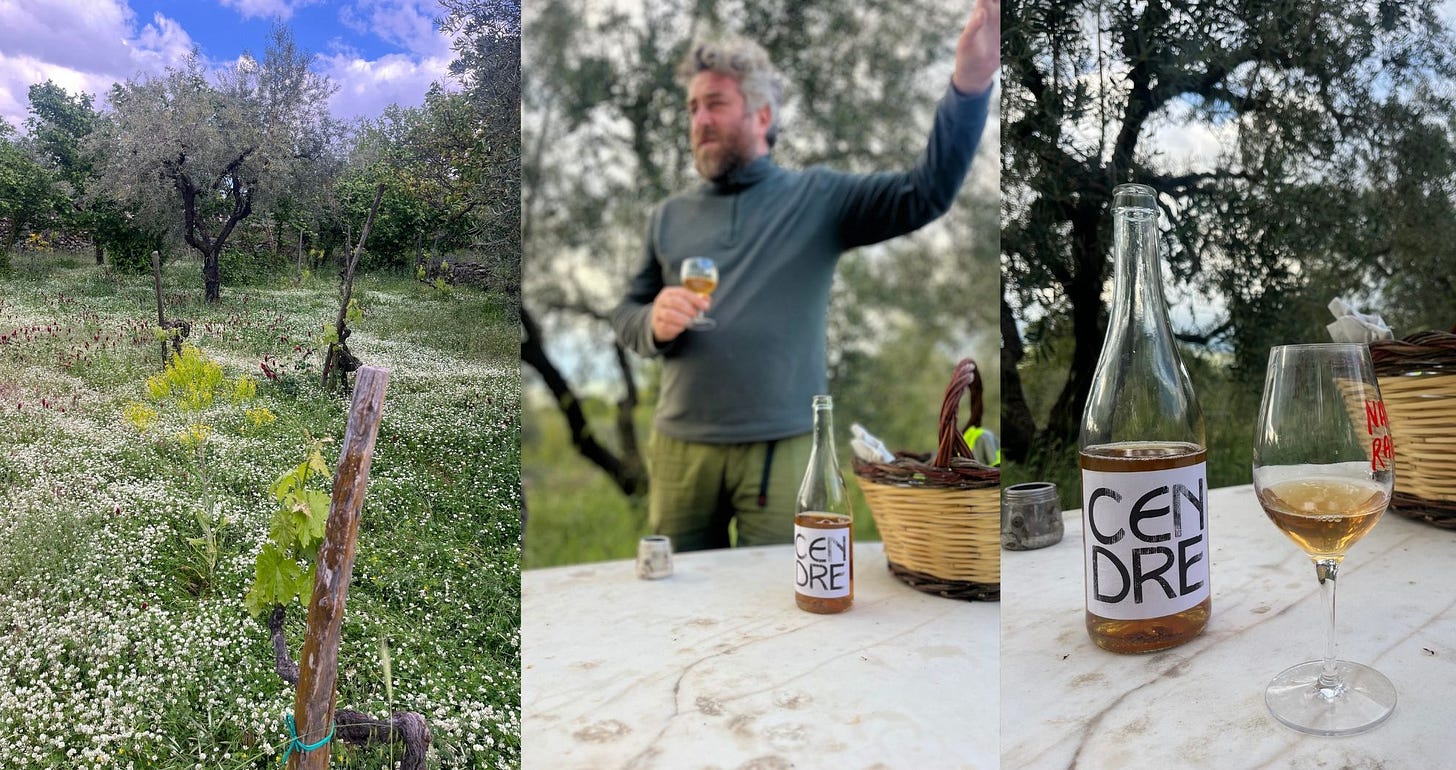
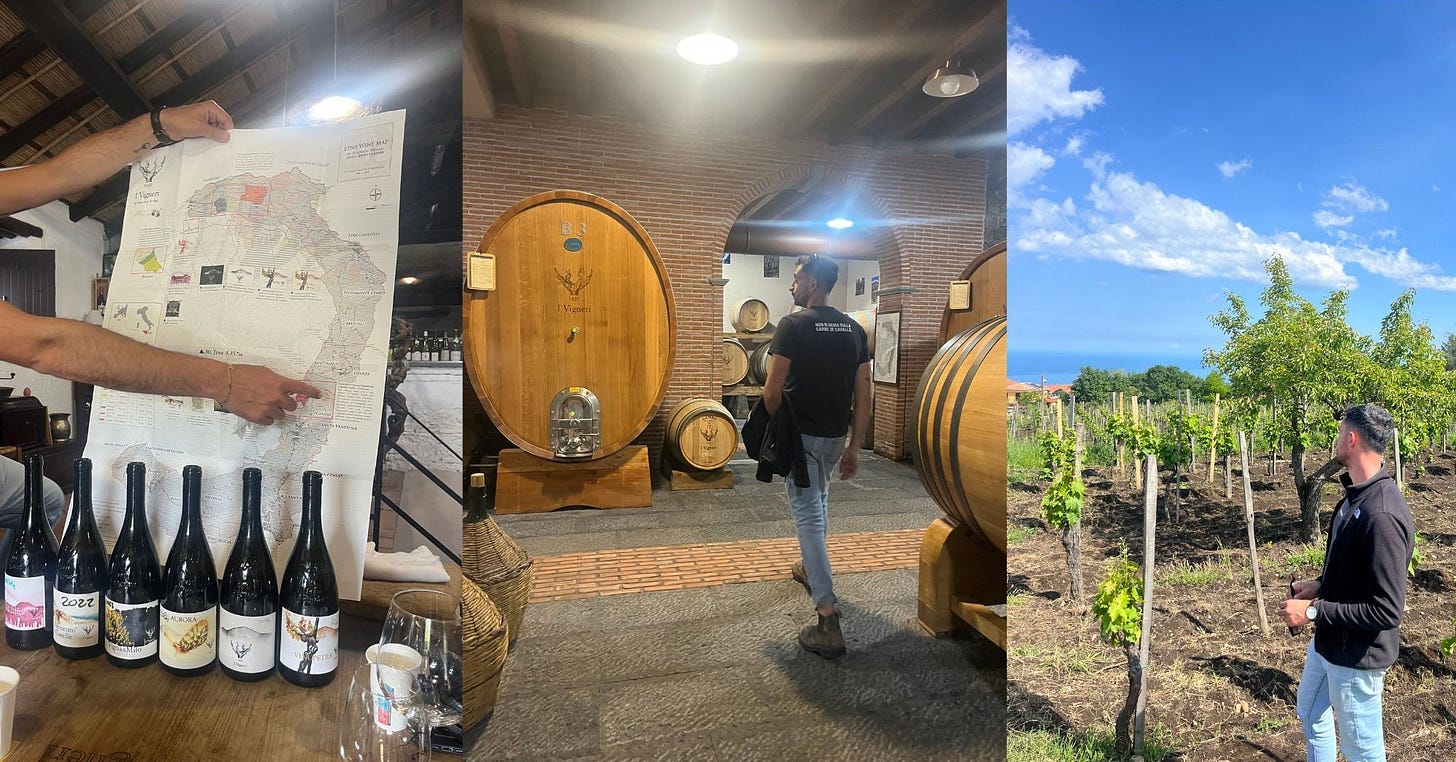
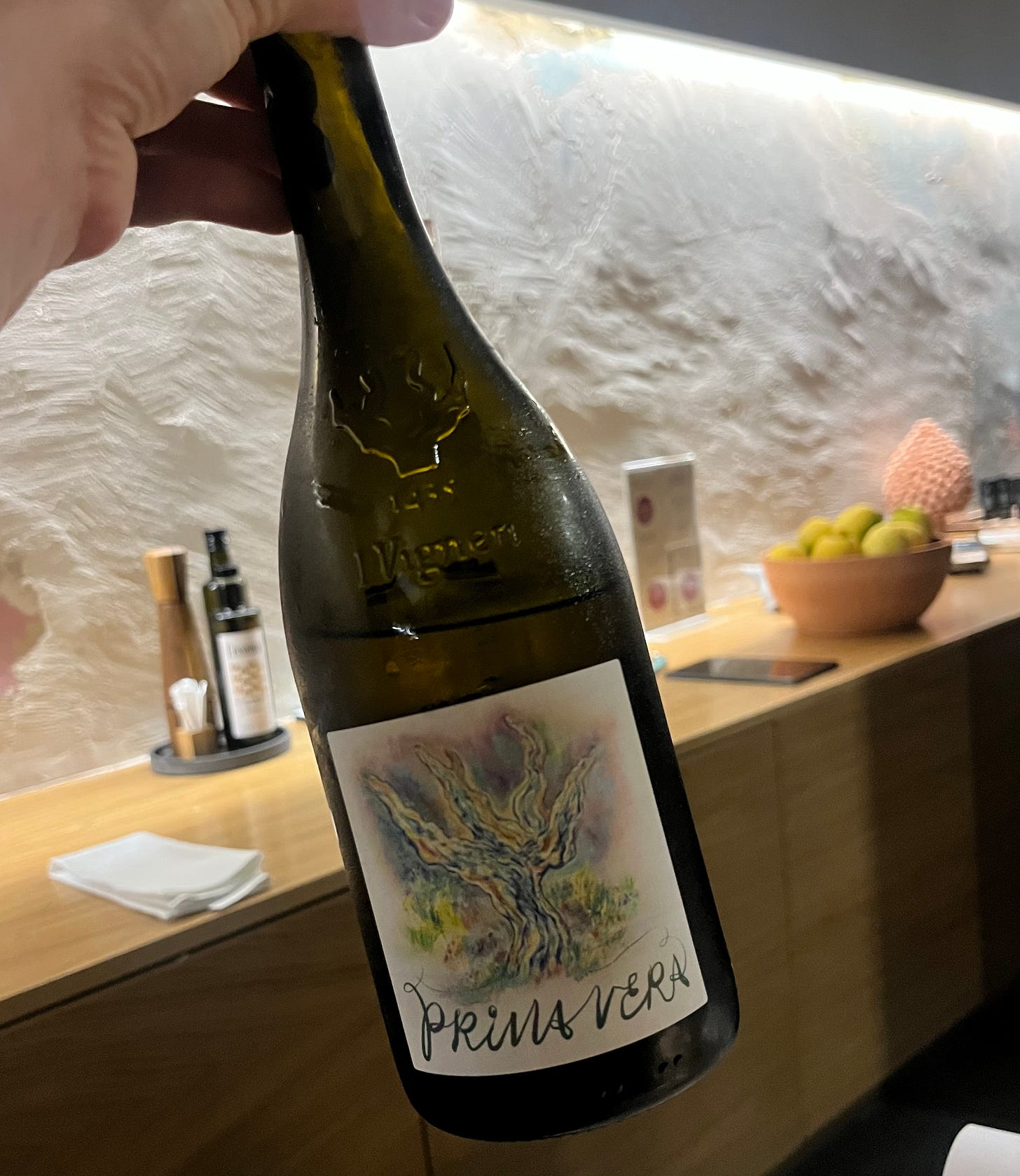

Share this post